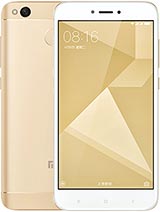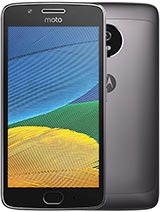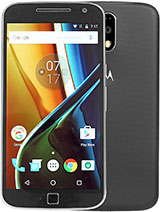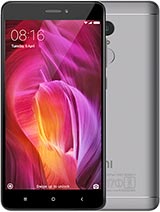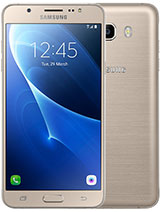GSMArena smartphone buyer's guide: 2017 July edition
2017 July edition

€100-€200
Things are starting to pick up here. We are still a ways off from getting any sort of bragging rights, but there are offers that will make you question why you ever paid more than €200 for a phone. Granted, they won't work for power users, avid mobile gamers, or photography enthusiasts, but those with more casual needs might find this their final stop in the guide.
All you need is a good understanding of your personal requirements and use-cases, so you can pick a device that cuts the right corners. Since there are a lot more options this time, let's try to work our way up from the cheapest ones.
At €125 or so, you can easily pump your selection up from a Lenovo Vibe C2 to the Lenovo K6. So what do the extra €20 get you? Well, for starters, FullHD resolution. Also, that quad-core Mediatek MT6735P chipset we barely tolerated is swapped for an octa-core Snapdragon 430.
You also get twice the amount of RAM, at 2GB, as well as base storage at 16GB. Believe us when we say this all adds up to a much smoother experience. Even a fingerprint reader is there, even if it's not quite the best we've seen.
Specs
|
Cons |
Plus, you also get a bump in the camera department, with a 13MP main and 8MP selfie shooter and a marginally bigger 3,000 mAh battery. The image quality isn't quite as exciting as numbers suggest, but it's a better value, no doubt about it.
As for the Redmi 4a, its respective €125 alternative is the Redmi 4, also known as the Redmi 4X in its home markets, Malaysia and Pakistan. Coming with Snapdragon 435 and its octa-core CPU, and a larger 4,100 mAh battery, it's easily worth the extra €25.
Just keep in mind that the Redmi 4 is still stuck with a 720p display - if you want to get around that look for the Redmi 4 Prime. It also throws a mid-range efficient Snapdragon 625 in the mix, which makes it probably the best value in this price group. Unforutanately it's even harder to find than the vanilla 4.
Specs
|
Cons
|
|
| Review |
Where there's a Xiaomi handset, you can be pretty sure there is also a Meizu ready to take it on. In this case it has to be the Meizu M5, which can currently be found for about €135 (again, in relatively few markets around the globe). And as with the Xiaomi handsets, we certainly have to issue our standard support warning here.
Putting all that aside, the Meizu M5 is a pretty close match to the two handsets above. One difference is that the M5 is rocking a MediaTek MT6750 instead of the Qualcomm alternative. Also, you get a marginally bigger panel, at 5.2 inches, and a smaller 3,060 mAh battery. But, the latter only leads to a 4 hour difference in endurance rating in our tests.
Specs
|
Cons
|
|
| Review |
From a purely physical perspective, the Meizu M5 utilizes a physical home button, which also means a front-mounted fingerprint reader. Just in case that is your personal preference, that is.
Another viable option that will cost you as much as the Meizu is the unfortunately-named Huawei Y6II Compact. It definitely sounds a bit obscure, but we found it to be a better option than the much better known Huawei P8 lite, which is now showing its age or the Huawei Y6, with its quad-core MediaTek CPU.
Specs
|
Cons
|
Not only this, but the Y6II Compact packs a 5.5-inch display, which just happens to be right in the sweet spot for most buyers, if statistics are to be trusted. The only obvious trade-off is a 720p panel. Also, considering the models rather obscure nature, you might very well be stuck with the Android Marshmallow ROM it ships with.
If better after-market support is what you are after you should check out the Sony Xperia XA. It has an excellent camera combo going for it, especially if you are more "selfie-inclined" and will even get a Nougat update. Sony has a much wider distribution network too, which means that not only are you able to buy this one in more markets, but it's also much easier to find a service center should you need one.
Specs
|
Cons
|
|
| Review |
On the flip side, you have to live with a 720p panel and a very small 2,300 mAh battery, which only managed a 54 hour endurance rating in our tests.
On to the higher reaches of the price segment then. Motorola has a pair of interesting offers that caught our eye. The Moto G5 puts a 5-inch FullHD panel, a decent Snapdragon 430 chipset, and a pretty clean Android Nougat OS on the table- no mean feats in this price range.
Specs
|
Cons
|
|
| Review |
Just keep in mind that the battery capacity is far from great, and the ROM is not quite as clean and bloat-free as older Moto devices. The promise for speedy updates was Motorola's thing when it was under Google ownership, but we wouldn't count on those now that Lenovo is having trouble turning in a profit. Still, it launches with Nougat, so it's either outdoing or at least matching most of its rivals here.
The Moto G4 Plus poses an interesting dilemma. It costs around as much as the Moto G5, so if you are willing to live with an older and slightly less potent chipset, it can hook you up with a 5.5-inch panel and a significantly more sophisticated 16MP camera, with laser autofocus.
Specs
|
Cons
|
|
| Review |
Throw in the bigger battery on the G4 Plus and it's a head-scratcher for sure. Still, the pair sports pretty different and distinctive designs, so looks and size alone should be enough to sway you one way or the other.
Of course, this price segment wouldn't be complete without mentioning at least a couple of devices based on the 14nm power-efficient Snapdragon 625 chipset. It's the pioneer of a new wave of chips that leverage smaller fabrication processes to deliver longer battery life to the masses, rather than strive for performance as most flagship chipsets.
The Xiaomi Redmi Note 4 is certainly its most popular bearer, and with a 119 hour endurance rating it really proves the chipset's value. The handset is pretty well-rounded too, offering a decent camera experience and a 5.5-inch FullHD display. It runs on Marshmallow, but it was promised an update to the Nougat-based MIUI 9.
Specs
|
Cons
|
|
| Review |
An alternative to those not fond with MIUI, or simply unable to get the Xiaomi handset in their market, is the Samsung Galaxy J7 (2016). It drops the resolution back down to 720p, but its panel is of the Super AMOLED variety.
Specs
|
Cons
|
|
| Review |
An important note about this one - be sure to look for the Exynos 7870 Octa variant, as it is the 14nm one. The other version of the Galaxy J7 (2016) uses the Snapdragon 617, which is a generation older and not nearly as efficient.
And last, but not least there's the Huawei P9 Lite to be found right around the €200 mark as well. It shouldn't be confused with the P8 Lite (2017), although Huawei did its best to thoroughly mix up naming this year. It has a smaller battery and shorter power autonomy compared to the two above, but it's a solid overall package nonetheless.
Specs
|
Cons |
|
| Review |
Reader comments
- AnonD-416241
- 25 Aug 2017
- XM{
A tablet buyer's guide would be very helpful for us...
- AnonD-692663
- 18 Aug 2017
- mdx
The problem with the v20 (and V10) is, that there screens has a standard error...and the worst is, that LG knows that, but they are doing nothing against it...
- AnonD-692663
- 17 Aug 2017
- mdx
I just missed the ZUK Edge / Z2 Pro from the list at the 200-300$ groop. If the axon makes itt,this two should too ;)

